Since COVID-19 forced millions of Americans to abruptly shift to working remotely in March 2020, there have been plenty of headlines hypothesizing that the office was dead. It’s very much alive, but what the office of the future looks like remains unclear. While people can work remotely and remain successful, there’s value in the human element and in-person interactions.
The past year has taken a toll on employees, with stress and worry posing a heavier burden for those working remotely than those able to work on-site during the pandemic.
There’s a strong link between employees’ wellbeing and engagement. They complement each other and present the potential to super-charge the employee experience.
Organizations are forced to do a balancing act. Not only do leaders need to make decisions about when and how to return to the office, but they also have key decisions to make that could impact wellbeing and productivity. Although there is no one-size-fits-all approach, these three tips for finding the balance can help.
Evolve with Changing Needs: The Office Isn’t Dead
Most executives agree that the office is necessary to preserve company culture, which has an intrinsic link to employee engagement. PwC’s survey of 133 executives in late 2020 revealed 95 percent of executives believe that employees need to be in the office at least occasionally, with 68 percent indicating that they believe employees should be in the office three or more days per week to keep the company culture going strong.
Research shows that a strong culture and high employee engagement support productivity rates that are up to 21 percent higher. Remote work challenges employees’ ability to build relationships and feel valued, according to Gallup. Among those who prefer in-person work, it can also be costly, with productivity levels that are 17 percent lower.
Service Now’s “The Work Survey” surveyed employees and executives in 11 countries. Results revealed that while more than half of executives are concerned about getting their products and services delivered on time, nearly as many employees are more concerned with the reduced collaboration between departments that results from remote work. Although remote work undoubtedly has an important role to play in the future, it can’t replace or mimic the engagement, spontaneous collaboration, relationships, and day-to-day communication that takes place in the office.
That’s why many organizations are embracing a hybrid work model that provides a setting to allow employees to focus when needed, foster camaraderie, and support healthy engagement rates. Being able to track space and amenities using actionable data is the key to making that work while balancing productivity and safety.
Leverage the Power of Data
To get the most out of the value that the office offers, executives and facility managers are increasingly using data to gain the actionable insights they need to design or redesign office space based on when and how those spaces are used. That same data is also the key to making decisions about the future office footprint.
That’s one of the ways that 4SITE by CORT can help balance your needs, helping to protect employees without invading their space or their privacy. While other data collection tools, like badges and observation data, contain invasive employee data, 4SITE’s sensors capture motion without using cameras or any personally identifiable information. The platform provides occupancy data and utilization analytics, not employee-specific metrics.
For facility managers, human resources, and executives, having access to that kind of insight is like having another set of eyes. In turn, facility managers and those in HR can harness that data to spot usage trends and create office designs that best meet their employees’ needs to support optimal productivity.
It also allows leaders to determine how employees interact with space. For example, sensor data can tell you what meeting rooms are used, and which ones sit empty, how many desks are filled at a given time, and where the high-traffic areas are. The data can also help answer the question, “are the newly introduced undedicated space layouts performing?” This empowers leadership to conduct ongoing assessments of the space, providing the information you need to make safety-minded decisions like creating one-way walkways and scheduling employees for days to come into the office without overcrowding the floorplan. It also allows seamless contact tracing to support the health and safety of employees.
Assess and Reassess: Does Your Space Still Work?
The office is destined to be the human touchpoint for organizations, providing the necessary space for employees to gather for collaborating, meeting with colleagues and clients, and career development. That gives facility managers a starting point with which to design the office of the future in a way that supports employee engagement and productivity while keeping everyone safe.
Using sensors allows you to gain actionable insight about how much square footage you need while providing usage statistics and density information to plan your layout and ensure that everyone complies with distancing requirements. It’s the measure twice, cut once tactic that ensures solid decisions are made that best fit the dimensions of what the organization and its employees need. Without it, leadership is working blind. With it, executives might opt to break up a central office in favor of several satellite offices to avoid overcrowding the space or downsize if large sections of the office go unused.
It can also aid in design, which is an important element for both safety and productivity. Additionally, when you know how a space is being used, you can equip it to support productivity and safety with perfect balance. Filling a space that’s used for brainstorming or meetings with cubicles won’t meet the need of the employees using it. Similarly, areas used for highly focused work might not be ideal for large conference tables.
With shifting business needs come big changes in everything from how and where employees work to the furnishings you need to balance distance, safety, and productivity. CORT Furniture as a Service allows facility managers and executives to respond quickly to changes in space utilization, making it easy to swap out desks for conference tables, cubicles for lounge seating, or whatever else the data you’ve collected tells you will meet your employee’s needs.
Maintain productivity while keeping everyone safe, that’s part of how CORT Furniture Rental and 4SITE By CORT are helping organizations get back up and running. In uncertain times, being able to rely on experts to work with you to not only select the right furniture but also plan your space for optimization, can make all the difference.
Image by StartupStockPhotos from Pixabay






